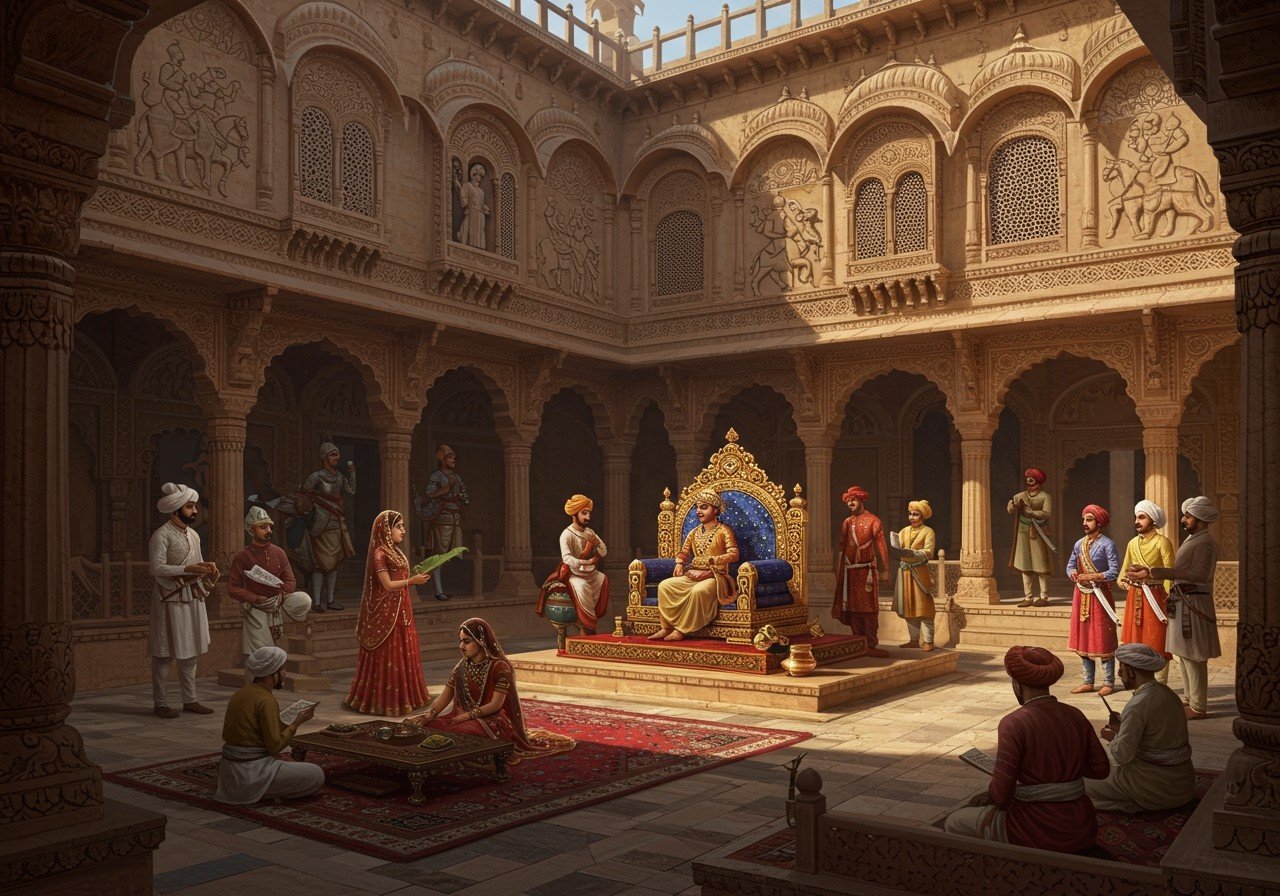
The Pratihara Dynasty, a prominent power in ancient India, reigned over substantial portions of Northern and Central India from the 8th to the 11th centuries. Known for their administrative prowess, military strength, and patronage of the arts, the Pratiharas left a lasting mark on India’s cultural and political landscape. This article delves into the intricacies of their administration, political structure, and the factors that contributed to their rise and fall.
A Look at the Pratihara Timeline (8th – 11th Centuries)
The Pratihara Dynasty’s story began with Nagabhata I around the early 8th century. His successors skillfully expanded the kingdom, navigating both triumphs and tribulations. Mihira Bhoja, a pivotal figure in their history, propelled the dynasty to its zenith between the 9th and 10th centuries. This era saw the Pratiharas engaged in constant conflicts with neighboring powers, particularly the Palas and Rashtrakutas. Internal strife and external pressures eventually led to the dynasty’s decline in the early 11th century, culminating in their defeat by the Ghaznavid Turks.
The Pratihara Lineage: Key Figures and Their Influence
The Pratihara lineage boasts a series of influential rulers who shaped the dynasty’s trajectory. Starting with Nagabhata I, the founder, the dynasty witnessed significant expansion under Vatsaraja. Nagabhata II further solidified the empire’s power, setting the stage for the golden age under Mihira Bhoja. Mahendrapala I continued this period of prosperity, though the later rulers faced increasing challenges. Beyond the kings, queens and other family members played crucial roles in administration and politics, influencing decisions and governance.
Governance and Politics: The Structure of the Pratihara Empire
The Pratihara Empire boasted a sophisticated administrative system, with the king at its core. A council of ministers advised the king, while provincial governors managed different regions, ensuring effective control across the vast territory. The empire was divided into administrative units known as Bhukti, Mandala, and Pathaka. A judicial system, including local assemblies, resolved disputes and maintained order. The military, composed of various units and supported by feudal lords, defended the realm from external threats.
Economy and Revenue: Pillars of Pratihara Prosperity
The Pratihara economy thrived on a strong foundation of agriculture, supplemented by robust internal and external trade routes. Flourishing urban centers served as vital marketplaces, facilitating economic activity. The revenue system relied on taxes levied on agriculture, trade, and other economic activities. Land revenue, in particular, formed a crucial component of the empire’s income, supporting its administrative and military functions.
Cultural and Religious Landscape: A Legacy of Patronage
The Pratiharas were renowned patrons of art, architecture, and religion. Their support for Hinduism, particularly sects like Shaivism and Vaishnavism, is evident in the magnificent temples and monuments they constructed. Cultural exchanges with neighboring dynasties enriched the artistic landscape, influencing literature, music, and dance, leaving a lasting legacy on India’s cultural heritage.
Pratihara Dynasty Flag and Symbols: Emblems of Power
The flag and symbols of the Pratihara Dynasty served as potent emblems of royal authority. These symbols, often incorporated into art, sculpture, and coinage, reinforced the dynasty’s identity and sovereignty.
Poojn’s Sacred Items for Administrative Success and Prosperity
At Poojn.in, we offer a curated selection of sacred items that resonate with the administrative and cultural ethos of the Pratihara Dynasty. These items are ideal for those seeking to connect with India’s rich historical and spiritual heritage.
- Pure Marble Radha Krishna Bigraha: This exquisitely crafted statue embodies divine love and harmony, reminiscent of the Pratiharas’ patronage of religious art. Perfect for home altars or meditation spaces, this Bigraha serves as a reminder of the dynasty’s devotion to spiritual principles.
- Marble Dust Laxmi Ganesh Murti: This divine duo represents prosperity and auspicious beginnings, aligning with the Pratihara Dynasty’s focus on economic stability and administrative success. Ideal for homes and businesses, this Murti invokes blessings for wealth and good fortune.
- Pure Brass Maa Tara Murti: This powerful depiction of Maa Tara symbolizes strength and protection, reflecting the Pratihara Dynasty’s military prowess and their commitment to safeguarding their realm. This Murti serves as a source of inspiration and courage.
Visit Poojn.in to discover our extensive collection of authentic puja items, handcrafted with devotion and reverence. We offer secure packaging and pan-India delivery, ensuring that you receive your sacred items with utmost care and convenience.
Conclusion: The Enduring Legacy of the Pratiharas
The Pratihara Dynasty’s sophisticated administration, robust political structure, and patronage of arts and culture solidified their place as a major force in ancient India. Their legacy continues to inspire and inform our understanding of India’s rich history and cultural heritage.
FAQs on the Pratihara Dynasty
How did the Pratiharas administer their vast empire? The Pratiharas employed a decentralized administrative system, dividing their kingdom into smaller units governed by local rulers who reported to the central authority.
What was the role of the king in the Pratihara political structure? The king held supreme authority, making key decisions, leading military campaigns, and overseeing the empire’s welfare.
What were the primary sources of revenue for the dynasty? The Pratiharas derived revenue from land taxes, trade, and tributes from subordinate rulers and conquered territories. This economic foundation fueled their expansion and administrative efficiency.


